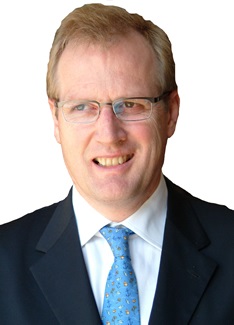Please can you give a brief overview of the history of AMD treatments?
For two decades beginning in the late 1970’s through 2001, clinicians relied upon laser photocoagulation in the treatment of wet AMD caused by choroidal neovascularization. Attempts to obliterate the neovascular lesions often led to acute central visual loss and often, even with modest success, the lesions recurred with even more vision loss.
Photodynamic therapy with verteporfin was a breakthrough therapy, which reduced the degree of vision loss, but did not hold the promise of vision improvement. Anti-vegf (vascular endothelial growth factor) intraocular injections, introduced first in 2004, were a game changing treatment, a paradigm shift, which for the first time saw 30 to 40% of patients improving with regular treatment, involving regular intraocular injections of medicine.
How much progress has been made over the last decade in the treatment of wet (neovascular) AMD and how does this compare to dry (atrophic) AMD?
A great deal of progress as outlined above is happening in the field of wet AMD as contrasted with frustration over the lack of proven therapies for dry or atrophic AMD. That said, however, there are promising medicines in clinical trials for dry AMD currently.
How are new technologies, such as Oraya Therapy, changing the treatment landscape for wet AMD?
New technologies are always being sought which may improve quality of life, result in a dosing regimen easier to tolerate and be compliant with, and which is more cost-effective.
What impact do you think Oraya Therapy will have on clinics and payers?
Oraya therapy holds promise to preserve vision gains made with anti-vegf injections while significantly reducing treatment burden.
In your recent talk at the House of Commons Reception you mentioned that a lot of promising clinical research is underway. Please can you outline some of the studies taking place?
Well if one checks the clinicaltrials.gov website, there are literally hundreds of clinical trials registered for AMD alone, so I cannot be comprehensive. I think the trials evaluating the anti -complement compounds hold promise for the treatment of dry or atrophic AMD.
Do you think future treatment strategies will continue as a form of monotherapy?
Not likely although new drug therapies will continue to be costly and cost-effectiveness is often computed with these new therapies calculated as a monotherapy. Therefore being mindful of cost will be essential to make any combination proposed acceptable to health authorities and payers.
What do you think the future holds with regards to new technologies that reduce treatment burden?
I think that treatment burden has become a major problem in the treatment of AMD, and we are therefore very interested in finding treatments that reduce the burden to patients and their families in time and cost, while preserving safety and efficacy. We certainly would not want to sacrifice any of the gains we have made to the quality of vision enhancement and preservation in our AMD patients.
Where can readers find more information?
AMD Alliance website is one good option. If readers are patients already under care they should speak to their ophthalmologist about all of the options available and about future possible therapies available.
About Dr Alan Cruess
 Professor, Department of Ophthalmology and Visual Sciences, Dalhousie University, Halifax, Nova Scotia, Canada
Professor, Department of Ophthalmology and Visual Sciences, Dalhousie University, Halifax, Nova Scotia, Canada
Dr. Alan Cruess is Professor in the Department of Ophthalmology and Visual Sciences at Dalhousie University, Nova Scotia, Canada. He has completed two five-year terms as Head of the Department, and as District Chief of Ophthalmology of Capital Health in Nova Scotia (2003-2014). Previously, Dr. Cruess was Head of the Department of Ophthalmology at Queen’s University, from 1992-2003.
Doctor Cruess’ main research interest is in clinical trials of new therapies for age-related macular degeneration (AMD), diabetic retinopathy, and retinal vascular occlusion.
Dr. Cruess has recently been appointed as a principal investigator at his hospital of the Diabetic Clinical Research Network (DRCR.net), a National Eye Institute (NEI) U.S. sponsored network to conduct clinical trials in diabetic retinopathy.
Dr. Cruess is a member of the Canadian Medical Association, the Canadian Ophthalmological Society, the Macula Society, the Retina Society, the American Society of Retinal Specialists, and Club Jules Gonin.
He is also a Fellow of the Royal College of Physicians and Surgeons of Canada and of the American Academy of Ophthalmology (AAO). He is a Past President of the Canadian Ophthalmological Society (2006-2008) and has served on the Board of Directors of the Pan-American Association of Ophthalmology, and on the Council of the American Academy of Ophthalmology.
Dr. Cruess has recently been elected to the Board of the Canadian National Institute for the Blind (CNIB), and serves as the Chair of the Scientific Advisory Board of AMD Alliance International.